Published on September 14, 2012
By Thomas Van Hare
September 14, 1976, was an unlucky day for the aircraft carrier USS John F. Kennedy. Approximately 100 miles northwest of Scapa Flow, Scotland, the ship was taking part in a 100 ship NATO exercise called “Teamwork 76”. It was Press Day and the assembled photographers of the United States and Europe watched as one of the ship’s F-14A Tomcat fighters — from VF-32 — taxied toward Catapult #3 for launch. The pilot, Lt. John L. Kosich, and his radar intercept officer, Lt. (jg) L. E. Seymour, prepared for launch. Suddenly, the engines inexplicably roared to full power. Lt. Kosich checked the throttle, but found it was still set at idle. He stomped the brakes, but the plane began to skid forward despite that he had locked tires, the combined thrust from the jet’s two, very powerful TF30-P-414A engines was just too much.
WATCH THE VIDEO!
Ahead, a line of aircraft loomed. Long black streaks of tire rubber scarred the deck. Steering left, Lt. Kosich ran the plane away from the other aircraft. The flight deck crew dived out of the way to the side. One crewman wasn’t fast enough and his ankle was caught under the tires and crushed. The rest made it safely away. Then F-14A’s right wing hit two adjacent planes, causing significant damage. By his fast thinking and actions, Lt. Kosich had prevented a catastrophic crash, one that would have likely caused a massive fire. The planes parked ahead were fully fueled and armed. Still, there was no stopping the F-14A. It dragged its way forward, despite the locked tires and headed toward the edge of the deck. As the plane rolled off the deck and started to fall toward the water below, Lts. Kosich and Seymour ejected.
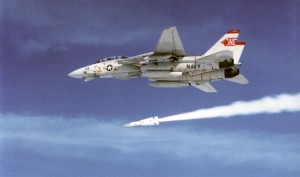
The two men were safe and Tomcat sank beneath the waves. The plane was valued at just over $14 million, which in modern terms equates to $57 million when corrected for inflation for the 2012 year. The value of the plane, however, was far more than the cost of manufacturing — it featured the newest, best technologies in the US Navy’s air arsenal and if those secrets fell into Soviet hands, it would be costly beyond measure to US national security.
Nearby, a Soviet Navy cruiser was shadowing the fleet. It sailed close by and everyone instantly knew that the Soviets had logged the position of the accident. The ramifications were clear — the F-14A Tomcat carried America’s newest, top secret AIM-54 Phoenix missile system, as well as its revolutionary fire control radar, the AN/AWG-9. Knowing the Soviet Union’s deep sea recovery capabilities, it was apparent that the two superpowers were in a race to recover the plane before some of America’s most sensitive technologies fell into Soviet hands.

The F-14 Tomcat and its Missile Systems
The US Navy’s F-14A Tomcat was deadly for one key reason — it was equipped with a revolutionary pair of combat systems, the AIM-54 Phoenix air-to-air missile and the AN/AWG-9 radar system. Managed by the radar intercept officer in the Tomcat’s back seat, the AIM-54 and AN/AWG-9 systems could track six targets simultaneously, redirect the missile in flight to alternate targets, and perform a lock-on in track-while-scan mode. It had an extraordinary range — 100+ nm — and the Phoenix missiles flew at a speed of Mach 5.
The missile had a maximum operating altitude of approximately 100,000 feet, which it incorporated into its attack profile, popping up and then descending on its targets from above. The US Military feared that if the Soviets recovered the aircraft and its missiles, they would reverse engineer the technology for their own use. That would be a dramatic leap forward in Soviet missile and radar technologies.
The US Navy would spare no effort in the recovery. It was a race against the Soviets.

Recovery Effort
The aircraft had sunk into waters that were 1,850 feet deep. Recovering the plane and the single AIM-54 Phoenix missile that it had carried would be no easy matter. As the other ships in the NATO exercise Teamwork 76 sailed away, they were pleased to watch as the Soviet shadowing ships followed. The concern was, however, that the Soviets would quickly attempt a recovery with a deep net dragged by a trawler. Therefore, the US Navy ordered a 24 hour watch on the site by air. Soon a rotation of P-3C Orions out of Keflavik, Iceland, were flying in airborne shifts over the site.
To facilitate fast recovery before the winter season set in, a contract was put in place with Seaward, Inc., a company in Falls Church, Virginia, that served the Navy’s special requirements. As Norway is a strong NATO ally, one of its salvage ships, called “Constructor”, was subcontracted to assist. The US Navy loaded on board an unmanned, radio-controlled submersible called “CURV-III”, the third generation of the Navy’s “Cable-controlled Undersea Recovery Vehicle”, which had been flown out to the site from California specifically for the operation. The Norwegians, with their extensive experience in deep seabed operations for its oil industry, were a critical part of the team.
The British sent the ship, Oil Harrier, which featured large winches that were capable of lifting the plane, which had an estimated weight of 72,000 lbs (32,000 kg) when fully loaded. The side-scan sonar provider, Hydro Surveys, from Fort Lauderdale, Florida, was tasked to bring its equipment to the scene. The US Navy provided the Abnaki class fleet tug, USS Shakori (ATF-162), then under the command of Lieutenant Commander David Sargent, and several other vessels to the effort.
As it turned out, the ocean would not give up the F-14A Tomcat and its secret hardware so easily.

The first step in the recovery involved USS Shakori, which deployed the side-scan sonar gear that Hydro Surveys had quickly dispatched for the job. The ship searched for the lost plane. The cold North Atlantic, however, seemed to be conspiring against the effort. Massive waves popped rivets and threatened to wash crewmen overboard. Conditions were terrible.
Day after day for ten days, the sonar scans showed nothing. Finally, on October 3, the sonar showed a promising target. After carefully charting the location, which was a distance from where the plane was supposed to have been, USS Shakori returned to port for repairs and supplies. A week later, the ship set out once again to return to the spot.
On its arrival, the crew were shocked to discover that the sonar came up empty. The seabed where they had previously spotted what was possibly the plane was somehow bare. Had the plane moved? Had it been somehow covertly recovered by the Soviets? Had it been dragged by a quick moving Soviet trawler. Whatever they had seen before was gone.
Navy analysts stressed that the Soviets might have undertaken a quick snatch and grab of their own. How they could have done that was a mystery. The watchful eyes of the Iceland-based P-3C Orions were still monitoring the area.
USS Shakori commenced a new search. Conditions worsened, however, and the ship and crew were battered by violent seas.
Deploying the NR-1
As this was unfolding, a Sperry engineer named Roger Sherman walked into the headquarters of Submarine Squadron Two at Holy Loch, Scotland, with an idea — why not send the Navy’s top secret NR-1 submarine to recover the plane? The answer he received was shocking — the officers in the unit had no idea what the NR-1 was, nor that it was already within close reach of the crash site. It seemed that the Navy’s top secret “research” submarine was so secret that even the senior officers on the base didn’t know of its existence or capabilities.
Soon convinced of the NR-1’s unique potential to recover the aircraft, a coded message asking for authority to deploy the sub was sent up the chain to COMSUBLANT in Washington, DC. The Navy’s surface fleet responded: the submarine was not needed and they should stay out of the recovery effort.
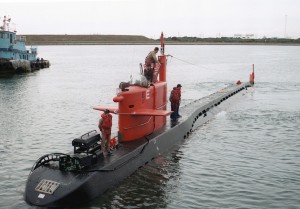
For Sherman, this seemed a travesty. First, the NR-1 was so secret that nobody in the Navy recognized that it was perfect for the recovery. Second, it seemed that the recovery effort had touched off a turf war between the surface Navy and submariners, reigniting long simmering intra-service competition.
From experience, Sherman knew that the real clout rested with the surface side of the Navy. Still, the submariners had a few cards to play. He called a friend, Capt. Art Francis, who was heading up nuclear reactor programs at the Groton, Connecticut, US Navy field office supporting Electric Boat (one of the Navy’s primary nuclear submarine builders). As one of those submarine nuclear officers who had been hand-picked for engineering in the submarine service, Capt. Francis had a direct line to Admiral Hyman G. Rickover, the Navy’s famously ornery submarine chief. He hoped that Adm. Rickover would take up the fight. If so, he would almost certainly win. In just a few hours, Rickover had been informed, made a decision, and the operation was a go. Word came back that the NR-1 mission was on — the code name for the operation was “Big Daddy”.
Capt. Toby Warson, USN, was put in charge of the recovery effort by the US Navy’s head of submarine operations in the Atlantic, COMSUBLANT, Admiral Joe Williams, USN. Capt. Warson was assigned at the time as commanding officer of the Blue Crew on USS George Washington Carver (SSBN-), one of the Navy’s most powerful ballistic missile submarines. Three years earlier, he had been the skipper of NR-1.
On board NR-1 was the sub’s current skipper, CDR Allison J. “Al” Holifield, USN, who was to have been reassigned but stayed on with the boat when the mission was assigned, and the man who was supposed to have relieved him in command, CDR Mike McQuown, USN. As well, the Executive Officer, Joe Nolter, who was also the one at the helm and their engineering officer, Mike Riegel, filled out the along with at least one other individual whose name is yet to be identified. The normal complement of the NR-1 for deep sea operations was once described as being 3 officers, 8 crewmen, and 2 scientists.
The Search Succeeds
The NR-1 was towed to the site by the Navy vessel, USS Sunbird (ASR-15), under the command of CDR Edward Craig, USN. USS Sunbird was a Chanticleer-class submarine rescue ship. The US Navy and Royal Navy were tasked together to keep the area clear of any Soviet vessels. Thus, the US Navy ordered an attack submarine, USS Batfish, to “sanitize” the area to ensure that no non-allied vessels were present as the NR-1 did its work. Loaded with torpedoes, the submarine cruised into the area, very aware that the unspecific nature of the term, “sanitize”, had potentially profound consequences. On the surface, the Royal Navy provided HMS Blue Rover to keep an eye out.
Soviet involvement was clearly being discouraged in the most raw terms. It was a message that the Soviets could not have missed. Nonetheless, the Soviets sent a fleet of recovery ships backed by the Soviet Navy, undeterred by the threat. The Soviets were intent on defending the international right of salvage, giving all nations the legitimate right to recover any ship or asset that was lost at sea. It seemed that the Soviets were willing to resort to arms if necessary.
Days passed in additional searching before USS Shakori relocated what they thought might have been the sonar target. Immediately upon its arrival on October 21, 1976, the NR-1 dove to the seabed and found that the area littered with large, irregular boulders, each of which returned signals at varying strengths based on the angles of the sonar pulse and the varying sizes of the boulders. This was why the surface ships with their side-scan sonar systems were having difficulty finding the wreck.
The NR-1 was uniquelly equipped for the job at hand. It had four external, electrical thrusters and advanced navigation systems that enabled it to remain motionless in the ocean, despite the current, or move with precision in any direction. It could even crawl on the seabed with a set of tracks that lined its keel. In the nose of the submarine was an observation compartment, in which up to two men would lie down prone and peer out of one of three thick glass portholes at the seafloor as it was illuminated by a bank of thallium lighting. The NR-1 began a laborious box search pattern of a roughly square mile area of the seabed, seeking to find the lost Tomcat by eyes alone. It was the only way.
The search proceeded without incident. The NR-1, however, found that the Tomcat was simply not where it should have been. The NR-1 then proceeded to investigate a sonar reflection that it was getting a few miles distant. As it neared the site, quite suddenly, the NR-1 spotted a massive tangle of numerous trawler nets directly ahead on its course about 100 feet over the seabed. The skipper ordered the submarine to reverse at full emergency power. If the sub couldn’t stop in time, it would possibly get tangled in the nets, with catastrophic results. The sub stopped just 20 feet from the first nets. It was a very close call. Backing away, the NR-1’s skipper took the submarine deeper to look at the seabed on the assumption that the nets had caught on something.
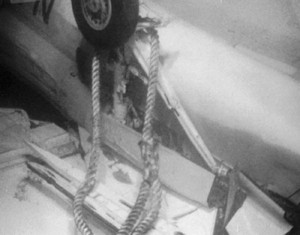
At the base of the nets, the NR-1’s crew spotted the F-14A. It was lying on its back, upside-down, with one wing crushed. Apparently, it had been dragged by a trawler’s nets a few miles away from where it had originally fallen into the sea. Clearly, it was either a trawler operated by the Soviets or just a deep sea commercial fishing trawler. Nobody knew which it was, but there were few fish to be found that deep in the ocean. Further, commercial fishermen were unlikely to fish that deep. All evidence pointed to the Soviets — they had gotten there first and quite nearly gotten away with the plane and its missile.
Photographs of the nets and buoy floats revealed a variety of origins — French numbers, UK fleet numbers, and, most ominously, Cyrillic writing. It appeared that the Russians had tried to drag the plane off after all. Most probably, they had done it during the week when USS Shakori had headed back in Scotland. The plane was too heavy for the nets, however. The Soviets had failed, but only based on the thickness of the net ropes. The tables had turned and US Navy had the aircraft in sight.
Yet the NR-1 reported back with another problem — the AIM-54 Phoenix missile was missing. Perhaps it had detached when the plane was dragged or perhaps the Soviets had managed to recover at least that. Nobody knew.
Recovery and Missile Search
The task of recovering the plane with the NR-1 was challenging. The plane was snagged in multiple nets and they floated in the current, waving back and forth. The nets threatened to snag and trap the submarine on the bottom. The NR-1 had to creep up, keeping its stern screws away from the wreck and nets, and attempt to tie a cable around the plane with its remotely operated arm. If the current shifted or the nets started to move toward the submarine, they would have to back away.
Further complicating the task was a newly discovered deep sea phenomenon that the sub crew christened as Nolter’s Maelstrom. This was a sudden blast of current that was the equivalent of a straight line wind, except that it raked the ocean floor. Nolter’s Maelstrom was something previously unknown to science. To this day, there is explanation as to why such ocean currents shift. Throughout the effort, as often as twice a day, the NR-1 would be hit by this newly discovered powerful deep current wave, each time nearly tipping over the submarine. Likewise, when the current suddenly picked up, the submarine was at risk of being snagged in the trawler nets.
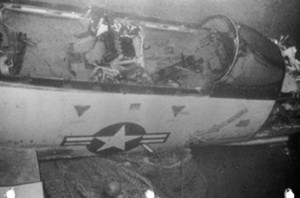
Meanwhile on the surface, the Soviet Navy’s recovery fleet was arriving in the area. The Royal Navy did its best to shepherd away the vessels, but they closed the distance relentlessly. Day after day, they were working their way toward the site, ignoring warnings from the RN ships. Finally, they too had arrived. By then, a small fleet of US Navy and contract vessels were on the scene.
The Soviets had arrived in record time, as if they knew exactly where the wreck was — which was likely if they had earlier snagged the vessel with the trawler. Yet the recovery was nearly completed — or so the US Navy hoped.
A tense standoff ensued. The US Navy proceeded with its efforts at recovery while the Soviets stood by, hoping that they would fail. Nothing was apparent on the surface and the Soviets assumed that the US Navy wasn’t yet able to work at the site. Meanwhile, unbeknownst to the Soviets on the scene, deep below and hidden from sight, the recovery lines were set into place by the NR-1.
Lift Attempts
Another storm rolled in even as one of the American ships took the lines and prepared to lift the aircraft. The seas swelled to 20 feet wave heights as the lift began.
Nearby, the Soviets recognized that something was up. They could see lines being attached and the winches starting to move. The Soviets ordered one of their ships to make a run toward the US Navy ship that was lifting the plane, hoping to disrupt the recovery. The Soviet vessel was intercepted and blocked, however, then ushered away.
The Soviets refused to give up and crept closer, watching for whatever evidence they could see. The lift proceeded slowly because the ships were rocking and getting tossed in the heavy seas. Each wave put stress on the lift cables, risking that they would break and the wreck of the F-14A would fall back to the seabed.
Finally, the stresses were too much and halfway up, the lines suddenly snapped. Just as everyone had feared, the plane fell to the bottom once again. This time it landed right side up. The NR-1 would have to locate the precise position of the plane once again, though this time they knew where to find, if only generally, within a much smaller area.
The Soviets seemed pleased. They continued to wait as the US Navy adjusted their position and began the days long task of relocating the plane. The NR-1 set new capbles and another lift was attempted. As the winches rotated, the cables tightened. The lift had begun. Yet again the plane was brought closer to the surface, and then, just as before, heavy seas put too much stress on the cables — they snapped. The Tomcat fell back to the sea floor.
Taking their cue from the Soviets, the US Navy decided on a brute force solution. The new plan was that the Tomcat would be lassoed once again by the NR-1 and then, rather than lifting it, it would dragged to shallower waters. The Navy quietly hired a pair of deep sea trawlers for the job.
The Search for the Missing Phoenix Missile
Far below, the NR-1 was ordered to abandon the recovery and go in search of the missing AIM-54 Phoenix missile. Once more, it cruised slowly in a search pattern, eyeballing the bottom of the ocean for the missing Phoenix missile. Finally, they spotted it resting on the bottom and only slightly damaged. Up above, the Soviets and Americans eyed one another, the Soviets were unaware of the new plan and expected that another lift attempt would soon be made.
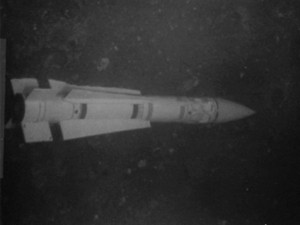
Whereas the plane had been too large for the NR-1 to recover on its own, the missile was an ideal size. The only problem was that nobody knew really if the warhead was armed. There was a possibility that the missile might explode during the recovery, which would likely destroy the submarine, killing everyone on board.
After a series of discussions, it was decided to order the NR-1 to proceed despite the risk. Positioning itself overhead, the submarine deployed its keel claw and slowly lowered itself atop the missile. Once certain that the missile was directly underneath, the claw was clamped gently closed. With the missile securely in hand, the NR-1 then rose to the surface, rising slowly to time its surfacing with the darkness of midnight. That way, the Soviets would be unable to get a good image of the submarine in the darkness or know exactly what it was doing.
Once it was the surface, the NR-1 bobbed in the heavy seas. With care, the missile was connected to cables from another surface ship. Everyone held their breath, hoping that when the NR-1’s keel claw was released, that the missile wouldn’t fall back to the seabed. The cables attached to the missile held and once the NR-1 released its hold on the missile, it was easily winched aboard one of the surface ships.
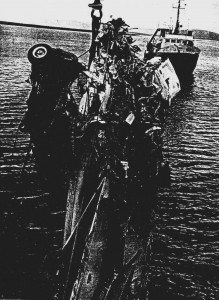
Recovering the F-14 Tomcat
Finally, the pair of German heavy trawlers that the Navy had hired arrived on the scene. One was the “Taurus”. The two trawlers dragged a heavy cable along the seabed and snagged the plane. Then, as one waited, the other ran circles around the F-14 until it was securely trapped amidst a knot of cable. Then the plane was lifted nearly to the surface. The two trawlers towed the Tomcat wreck to shallower water, where it was finally recovered. Traditional shallow water recovery methods were easily applied.
Although the plane was wrecked and twisted, a US Navy team quickly determined that all of the key components were still there. Despite the odds, the US Navy had saved the plane and its top secret hardware from falling into Soviet hands.
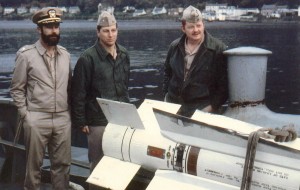
The recovery of the Tomcat from the seabed was extraordinary. So was the cost — ultimately, the US Navy had expended more than $2.4 million on the effort, however, America’s technology secrets were far more valuable than that. The Soviets too were impressed, though not positively. In addition to losing out on an excellent opportunity to steal modern US technology, they realized that they had a new and different problem.
The US Navy issued a press release that described how the missile had been recovered by a vessel they had never heard of before — the NR-1. The press release simply referred to a “five man research submersible”, leaving the Soviets perplexed. The existence of the NR-1 would dog Soviet intelligence officers for years to come. They wondered just what the little submarine could do. It had surfaced in the darkness of night and they had been unable to take photographs. How had it gotten the job done? How deep could it dive? What was it really doing? How could it snag and recover the Phoenix missile?
One More Bit of Aviation History
It took another ten years for the Soviets to finally acquire the F-14 Tomcat and learn its secrets. The Tomcat and its top secret Phoenix missiles had been sold to America’s key Gulf Region ally, Iran, during the 1970s. With the revolution of 1979, the Iranian Air Force found itself on the other side. An embargo on spare parts and systems soon hampered the Iran’s ability to support the planes and its complex systems. Hard up for cash, the Iranians allowed the Soviets to pay to have a close look at the AIM-54 and AN/AWG-9 systems. By the time the Soviet Union reverse engineered the missile, however, the US Navy had deployed a new generation of air-to-air missiles. The AN/AWG-9 radar and AIM-54 Phoenix missile were retired in favor of a new generation of yet more sophisticated missiles and systems — the AMRAAM. Still, the NR-1 had given the US Navy another ten years of technological superiority.
Today’s Aviation History Question
Throughout its service life, how many AIM-54 missiles were ever fired in combat and what was their score?

I was on the Flight Deck the day this happened, I watched the entire incident unfold. I was a slick sleeve E-3 Aviation Ordnanceman in VF-14, on a cat 1 & 2 Arm/Dearm team. I was standing in the “6 pack” area watching the VF-32 “Ordie” go under to arm the Phoenix. When he got between the Weapons Rails the Tomcat went into Full power. Thinking fast when the jet started moving forward he got out of there by going in front of the Starboard main mount as is our Safety procedure when arming the belly. As he came out from under the Starboard engine nacelle his right foot/ankle was run over by the main mount tire.
I’m surprised that he didn’t get sucked up the intake with the force of the incoming air since the engines were at full power. As the aircraft got closer to the angle deck the aircrew punched out, I couldn’t believe what I was seeing. Standing there in awe, my Chief grabbed me and pushed me under a Tomcat on elevator 2 just before the canopy came to rest on the deck where I was standing.
I watched the pilot go over the Port side into the water. The NFO’s chute was taking him into the prop wash of a turning E2, the ship was turning which caused the wind over the deck to carry the NFO to the Port side where he landed by one of the arresting gear wires I believe. So what came out of this for us on deck? The AO2 was wearing 10 inch flight boots, apparently they saved him from losing a foot, all of us then and in the next 20 years of my career were issued flight boots to work on the Flight deck.
I am an aviation historian in the UK. I was in touch with the WSO Lt (jg) Les Seymour some years ago regarding this incident and I`ll be including the F-14 story the fourth volume of a book series `LOST TO THE ISLES` . Be interesting to extract from your account if that`s possible? Could you please e-mail me at: the.dukeof@gmail.com David W.Earl.
Dave —
You may quote from our article with attribution.
Thank you!
Dave Earl:
I was a LT in VF-14 (RIO or WSO as you called it) and in Prifly as the squadron observer and watched the whole event. I also knew Les Seymour quite well.
Feel free to reach out if you’d like more info.
Bob Coleman
Chesapeake, VA
So what was the final say on why the Tomcat went full military on it’s own? Wow, what a story. What a great movie this would be but WITHOUT Tom Cruise!
I was a 2nd mech on CAC2 in VP49, deployed to Keflavik at the time and remember this well. We flew for about 3 weeks, 24 hours a day on this. Would fly out to where the jet went in the water and start an ever expanding circle out, ID’ing and filming the various Russian vessels in the area and there were plenty. I remember our flight schedule went to 15 hours on and 15 hours off for this.
Great to get the rest of the story. Thanks
Great story. However the Iranian AF did not give the AIM-54A or AWG9 secrets to the Soviets. Why? Because the Iranians were actually fighting the Iraqis who were armed with soviet technology and Iranians couldn’t risk losing their US technological superiority.
“The US Navy’s press office issued a release that described how the missile had been recovered by vessel they had never heard of before, the NR-1 — reportedly a “five man research submersible”.”
Mindboggling! Why does this nation, to this day, feel the need to constantly, like a bunch of teenage girls tweeting, broadcast important military systems to the world. If that boat was so important as to be classified ‘Top secret’ before the recovery, it should have remained so.
Published data, by a target nation, are chief sources of intelligence for belligerents. This practice, of willfully promulgating capabilities, is insane.
Gentlemen of the DOD, please curb your enthusiasm for preening before the world.
Amen, George Dean!
I just stumbled across this article. I was a plane captain sleeping in one of the A7 Corsairs (from VA-46) that was parked between the waist cat and the island with the nose pointed towards the island. I awoke to the severe buffeting of the plane and looked back just in time to see the twin nozzles of the Tomcat as it disappeared over the side as the crew ejected. LOL, seemed like every time something happened on that ship I was sleeping. When we collided with the USS Bordelon on that same cruise, I was sleeping at that time too as the collision occurred right behind my plane which was parked just forward of the elevator on the starboard side. (I was up there to ride brakes, waiting for the plane to be moved if needed). I awoke to the sound of banging, and it was one of the crash crew guys in a silver flame retardant suit banging on the canopy with the plastic nozzle of a CO2 fire extinguisher!
Another point, the USN CURV that was loaded onto Constructor after being flown into Scotland to recover the plane/missile.
The Phoenix missile system was NEVER fired in combat, however, we came close during Desert Storm when we thought Saddam was escaping in a private jet from Iraq to Iran.
Regarding this story, I am not sure if we ever figured out why the F-14 went to full power in this incident. Nice history of a great recovery effort.
The Phoenix was fired in combat by Iranian F-14s during the Iran-Iraq war, and apparently was quite as deadly against MiG-21s and -23s as one might expect. The AWG-9 proved unjammable.
I just came across the article looking for some information on my father, Frederick E. Anderson. He died aboard The Taurus (?) the night they pulled the plane up. He was a side scan sonar operator for Hydro Surveys. Would love to hear from anyone who knew or worked with him!
I was the ET on board Shakori. I worked close with your father. Very good person.
Thank-you for your efforts! I was aboard USS Sunbird (ASR-15). We had a lot to do with the recovery of the Phoenix missile but we did not get much recognition for our role in the operation, unfortunately. I was on watch when the missile was retrieved. We were under heavy seas and we were latched down for the journey back to Groton, Connecticut.
I was the XO/Navigator in Shaker during this operation. Worked closely with your dad. A great guy. He wrote a poem about the salvage mission which you would enjoy.
In what magazine was this story, “Tomcat Deep!”, first published?
Rich, this story, “Tomcat Deep!” was first published in this magazine, Historic Wings. Thank you.
I was an Aviation Ordanceman in “G Division’s Flight Deck shop” and on deck in the “bomb farm”, a long narrow area on the starboard side of the superstructure, standing “watch” over ordnance being staged in that area, during this event. I watched from a distance. The details mentioned above seen to be accurate!
Best wishes,
Robin R. Price
I was a MR1 (DV1) onboard the USS Sunbird (ASR-15) that towed the NR1 on that recovery mission. I had just gotten off watch when the missile was brought on board the Sunbird. I got to observe the crew bringing it in and tying it down. There’s more to the story that wasn’t told in this article but that’s okay because I was there.
Danny,
Hope you are well I was there with you on this mission. Stay well shipmate!
It would be difficult for the weapon systems on HMS Blue Rover to be on ‘hair trigger’ as it was an unarmed supply vessel for the Royal Navy.
I should have said that the correct name for the ship is RFA Blue Rover, she was a fleet supply ship operated by civilian crews. There appears never to have been a HMS Blue Rover.
My father, Mr. C.M. Stephenson, a retired US Navy Commander and carrier pilot, had retired from the Navy in 1968 after 23 years. He was the Systems Safety Engineering Manager for Grumman Aircraft, Bethpage, Long Island, on the F-14 Tomcat. The Navy requested his presence on the JFK for the recovery and it was his recommendation to use cables to snag the aircraft and drag it to shallow waters. I believe he spent over 50 days onboard the JFK intimately involved in its recovery. The Navy had a great deal of respect for my Dad and referred to him as Mr. F-14 for his detailed knowledge and dedication to the program.
The ship that was involved in this operations was RFA Grey Rover. It was an interesting operation and the Russians were quite aggressive in their manoeuvres to get near the NR1. I was one of the bridge officers on Grey Rover before I took up medicine as a new career.
I was on the Sunbird! Thanks for your help!
To confirm the idea at times it is a small world, today, 26 Aug 2023, while going into the Hollywood MD Post Office, a man coming out sees my USS Kennedy ball cap and stops to inquire when I served. When he learned In the course of our conversation that I was a pilot in VF-14 on the 72, 73 and 75 cruises, he talked about his event on the 76 cruise. His event turned out to be the 14 Sep 1976 loss of a VF-32 F-14A and he was the pilot. Yes, I ran into John Kosich, who I had never met but who’s name was familiar due to what happened one day earlier that year when I was an F-14 IP in VF-101 Det F-14. Since I note the question a few times asking what caused the engines to run up, I can provide the answer.
A few months before as I landed at NAS Oceana after a training flight, as I taxied off the runway both throttles suddenly went to full military power. I remember well the surge of adrenaline and high force it took to override the clutch in order to pull the throttles back to idle. I was now stopped at the 6000 foot turn off and secured the right engine before heading to the hot refueling pit. With only the left engine running, I taxied towards the fuel pit and as I turned to enter the left throttle suddenly went to full power. I again pulled the throttle back to idle and motioned to the fuel crew I was shutting the left engine down. The plane was towed forward to fuel then returned to the line as I wrote a downing discrepancy in maintenance control. From that day until Lt Kosich’s mishap I was unaware of any related developments and continued teaching ground school, instructing trainer sessions and flying training flights. Sometime after this mishap I was instructed to attend a conference at NAVAIR in Crystal City VA that was focused on determining the cause. As it turned out, the culprit causing the throttles to suddenly advance was a component in the auto throttle system, which if I remember correctly, had a built-in-test (BIT) feature that if activated would move the throttles forward. When I downed the F-14 in maintenance control, that component, which serial numbered so it could be tracked, was sent to the Intermediate Maintenance Activity (IMA) on NAS Oceana where it was put through a test and check procedure. When the IMA technicians could not duplicate the gripe and found the component passed the tests, they coded it A799 and returned it to supply as Ready For Issue (RFI) to be used when needed on another F-14. Thanks to the serial number tracking it was discovered that that very same component was in Lt Kosich’s Tomcat. Since I had successfully survived this component’s bad behavior, I was sent to NAVAIR to aid the investigation. While it is stated above that Lt Kosich checked the throttles were at idle, I somehow doubt that was the case. Knowing the amount of force it took to pull the throttles aft on land, I suspect he was so overwhelmed by what was happening and with so little time to make any decisions, that the auto throttle BIT activated and did the same thing it didwith me, namely run the throttles full forward. Remembering when I encountered the problem, I was moving at taxi speed and wasn’t successful on my first attempt to retard the throttles. That caused my adrenaline to go up the flag pole and allowed me to muster the strength to pull the throttles back on my second attempt. It was like 50 pounds of force. I at least had more time and space to concentrate on getting the throttles back. There is much more to distract and precious little time and space when on the carrier flight deck during flight ops.
The failure in the auto throttle component was subsequently addressed but my memory of how or what exactly was done is long gone. For want of a BIT check feature for the component, we lost one Tomcat that caused quite an international stir.
John seems to be doing well. He was in Southern MD visiting a son and about to enjoy a bike ride. God bless him.